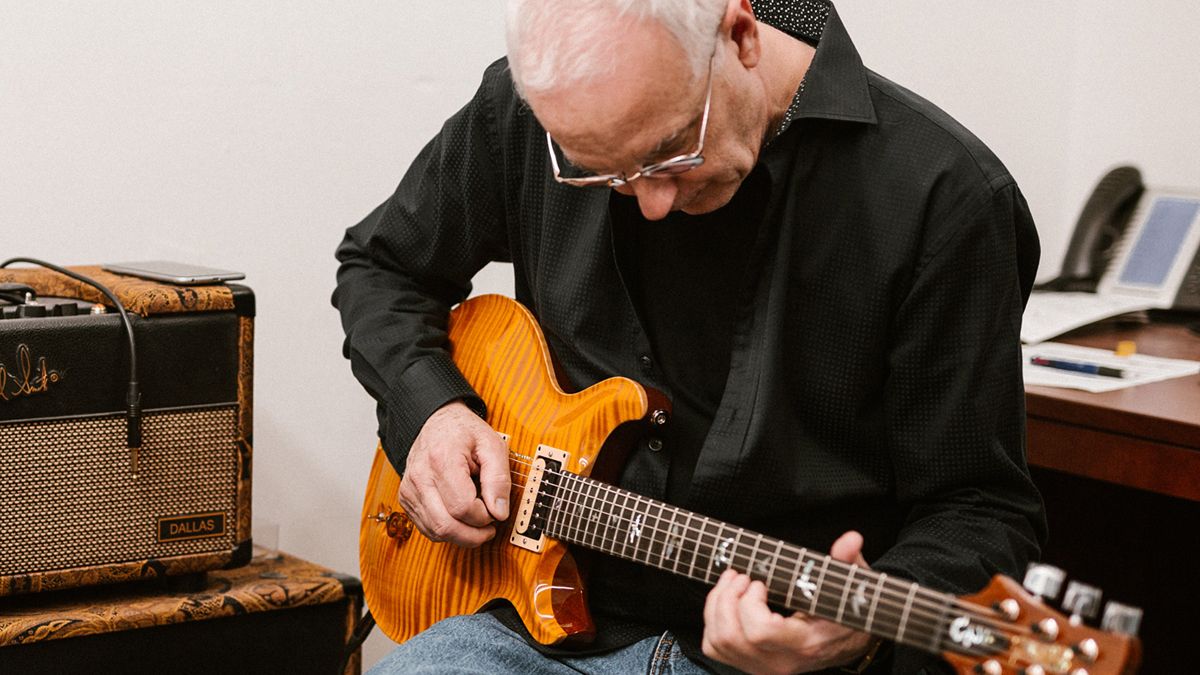Paul Reed Smith's other business offers hi-tech imaging solutions to medicine, aerospace and the intelligence services
The PRS Guitars supremo's tech company Digital Harmonic applies mathematical solutions to image enhancement

The Paul Reed Smith we all know and love is the avuncular doyen of high-end electric guitar design who has made his company the third largest guitar manufacturer in the US, behind only Fender and Gibson. His name is synonymous with boutique electrics with highly figured maple tops, but there’s a lot more on his CV.
In an interview with Fox News Sunday, Smith was named their Power Player of the Week, acknowledging his work in high-end guitars – but also in high-tech imaging technology. The segment revealed that Smith has been dividing his time between PRS Guitars and Digital Harmonic, a company he founded in 2015 and which applies advanced mathematics to enhance images and video.
Digital Harmonic has 100 registered and pending trademarks and almost 24 patents. Its tech can be applied in a variety of contexts, including medicine, astronomy, auto manufacturing and the intelligence agencies.
If an X-ray is a little soft, Digital Harmonic can bring out the detail.
The concept began when Smith was working on a synthesizer with his father. They were taking audio data from sound waves and amplifying it. They learned they could isolate instruments in the mix. It turns out, this concept could be translated to digital data.
When Fox News Sunday host Chris Wallace asked Smith what gave him most joy, making high-end guitars for the stars or building platforms such as the Precision Measuring Matrix, Smith equivocated.
"That's not fair,” he said. “You’re watching Carlos Santana play onstage, playing a PRS, that's good. I'm looking at information that I know no one has ever seen before? That's good, too. You can't compare the two. Both are good.”
Get the MusicRadar Newsletter
Want all the hottest music and gear news, reviews, deals, features and more, direct to your inbox? Sign up here.
Both said Smith, were tools. Carlos Santana needs his PRS doublecut to play, Digital Harmonic’s clients need its tech to “have clarity to make good decisions.”
Smith explained that, for him, making a guitar is synthesise of many disciplines. “It’s art and math mixed, and woodworking . . . For me, I am rotating that part in my head. I can see it.”
Having started in audio before moving into imaging, perhaps there there could be a musical application in the future for Digital Harmonic. If Smith can restore data from the pixels in an under-exposed photo, or separate instruments on a recording, perhaps Digital Harmonic’s tech could be used to restore old or lost recordings.
The question is: could record companies afford it?
Jonathan Horsley has been writing about guitars and guitar culture since 2005, playing them since 1990, and regularly contributes to MusicRadar, Total Guitar and Guitar World. He uses Jazz III nylon picks, 10s during the week, 9s at the weekend, and shamefully still struggles with rhythm figure one of Van Halen’s Panama.

“This golden gain machine covers the entire spectrum from gritty boost through to full-on fuzz”: Great Eastern FX’s Focus Fuzz Deluxe has got boost, drive, octave, fuzz... everything going on

“The mini humbucker fits into the same sized pickup cavity as a P-90 and delivers low-noise humbucking pickup performance and a slightly brighter and more open tone”: Gibson remixes the Les Paul Special with mini humbuckers










